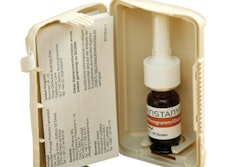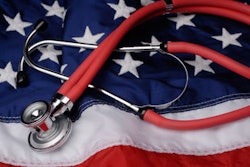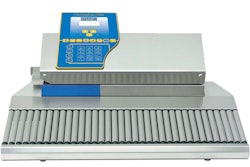The market is broken down into segments for therapy, diagnostic and monitoring, and logistics and training. The therapy segment currently has the largest share of the market, worth an estimated $9.5 billion in 2009. This should increase at a CAGR of 11.9% to $16.7 billion in 2014.
The diagnostic and monitoring segment has the second-largest share of the market, worth an estimated $3.3 billion in 2009. This segment is expected to generate nearly $5.9 billion in 2014, for a CAGR of 12.4%.
The logistic and training market is expected to be worth $272 million in 2009, and to increase to nearly $652 million in 2014, for a CAGR of 19.1%
Medical automation technologies are defined as technologies for the electromechanical control or operation of diagnostic or therapeutic processes or systems or training of healthcare professionals, which result in a reduced need for human intervention, or no such need at all. Examples of such technologies include health monitoring kiosks, automated X-rays, and surgical robots.
Among the technologies examined in this report are:
Automated health assessment and monitoring technologies
Automated medical imaging and image analysis
Automated prescription fulfillment devices
Automated therapeutic (nonsurgical) devices
Robotic and computer-assisted surgical equipment
Automated laboratory testing and analysis
Automated healthcare logistics, resource, and patient tracking
Automated medical training.
Major end-user segments for automated medical technologies include hospitals, stand-alone outpatient surgical centers, physician practices, pharmacies and other retail establishments, home-care recipients, the military, medical research institutes and clinical laboratories, and medical schools and other training programs.
Hospitals are one of the most important markets for medical automation technologies. The number of U.S. hospitals peaked in 1975 at 7,156 before beginning a slow decline that has continued to the present day. By 2007 (the most recent year for which data are available), the number of U.S. hospitals had declined to 5,704, a total shrinkage of more than 20%, or 0.7% per year since 1975. The decline in the number of traditional hospitals has been offset by a rapid growth in the number of outpatient surgery centers, as more and more surgery is performed using surgical procedures that do not require the patient to spend the night in the hospital.
The report is intended especially for healthcare automation suppliers, as well as government agencies, healthcare policy analysts and others seeking to understand the cost and preconditions for success of healthcare automation initiatives. Although the report is structured around specific technologies, it is largely nontechnical in nature.
Companies in this press-release






















